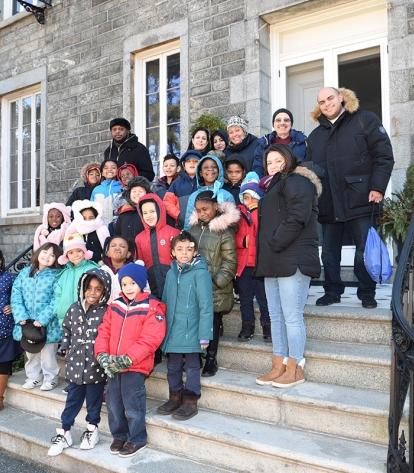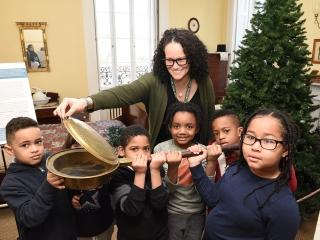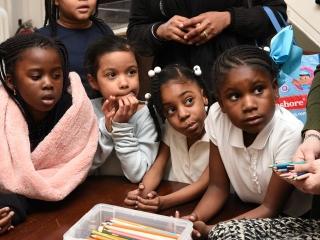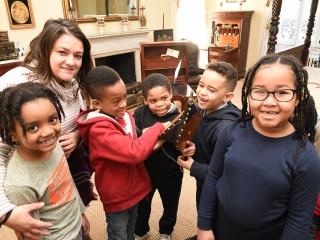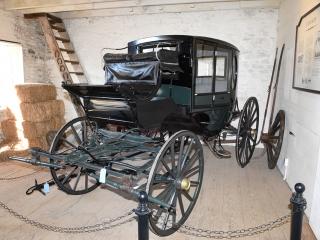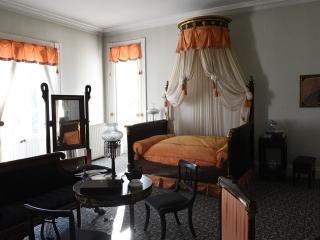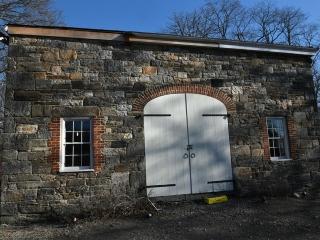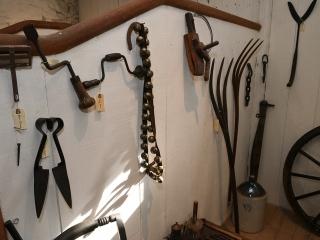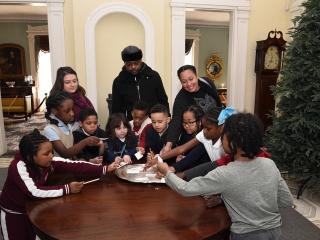How did a person in the 1840s know if a friend was home? For 1st-graders from PS 121 in the Allerton section of the Bronx, it was hard to imagine a life with no cell phone to call or text. But as they stood in the grand entryway to the Bartow-Pell Mansion Museum, the last remaining estate in the borough’s Pelham Bay Park, the students learned the etiquette of “stopping by” among wealthy families more than 150 years ago.
Joseph Cordasco, one of the museum’s educators, explained how visitors of that time had to actually knock on the door and extend a small decorative calling card with their name on it; the servant who answered the door took the card to the family to announce the visitor. When Jessica Colón, another museum educator, gave out blank cards and colored pencils, the students were ready to draw their names on their own calling cards.
“Let’s pretend the Bartow family is not home,” Cordasco said as the students finished their cards. “You’ll drop the card in the silver tray on the table” so the family knows visitors stopped by.
And with that, the 21 students were on their way into the world of the early 19th century, via a tour of the Greek Revival mansion that was built in the 1840s by publisher Robert Bartow. The estate where the mansion sits dates back to the 17th century, when a Bartow ancestor, Thomas Pell, purchased the land from the Lenape people and developed it at the behest of the English government. Today the estate and the mansion provide an entry point to the past and an opportunity to learn about life when the Bronx was farmland.
The 1st-graders also toured the estate’s carriage house, where they viewed a typical carriage and farm tools of the time, including a thick brush to groom the horses and a hand scythe to cut grass.
Crystal Geremia, the special education teacher for the integrated co-teaching class on the class trip, said the visit meshed perfectly with her social studies unit, “Long Ago and Today.”
“My students are learning about the past and how things transformed over the years,” Geremia said. “We did transportation recently and discussed how people traveled by air, land and sea.”
Once inside the house, Cordasco and Colón guided the students back in time, helping them to “see” the past and having them guess at the uses for items that were once commonplace: the iron stove in the front room that used coal or wood to keep the house warm; a barometer that predicted fair or stormy weather. “A long time ago they had no Weather Channel,” Cordasco said.
Although none of the furnishings in Bartow-Pell are original to the house, various museums have donated items that are true to its era, including sofas, chairs, lamps, china and other household items. Students squeezed a bellows, learning it was a device to help get the fire started in the fireplaces that heated the house. They wondered about the brass pan at the end of a long handle; Colón explained it was a bed warmer once hot coals were in the pan and it was placed under the bed. In another room, Colón held up what she called a “laptop” — a wooden box containing stationery, pens, an inkwell and stamps.
The house had no bathrooms for its original occupants, and students ogled the commodes — hidden in various small chairs — that a chambermaid was tasked with emptying. How did people bathe? That occurred just once a month, Colón explained as she held up a small model of a free-standing tub. The real tub would have been made of copper and would have been filled with water just once for the entire family to take turns bathing, with the baby of the family the last to go in. “The saying ‘Don’t throw the baby out with the bathwater’ comes from that time,” Colón said.
Bartow-Pell also offers class tours that examine how 19th-century Irish immigrants who served as domestic workers, gardeners and coachmen lived and worked on the estate, the toys of the 19th century and an outdoor exploration of the organic garden to learn about plant cycles, ecology and nutrition.
Nina Berisha, the 1st-graders’ general education teacher, said she’s already planning a return trip. “It was great for the students to see how families lived back then,” she said. “The tour guides were knowledgeable, and the students were engaged. I’m looking forward to them having a hands-on experience in the outdoor garden in the spring.”
The Bartow-Pell Mansion Museum offers K-12 students programs and activities that explore various aspects of 19th-century life. Visit their website for more information.
